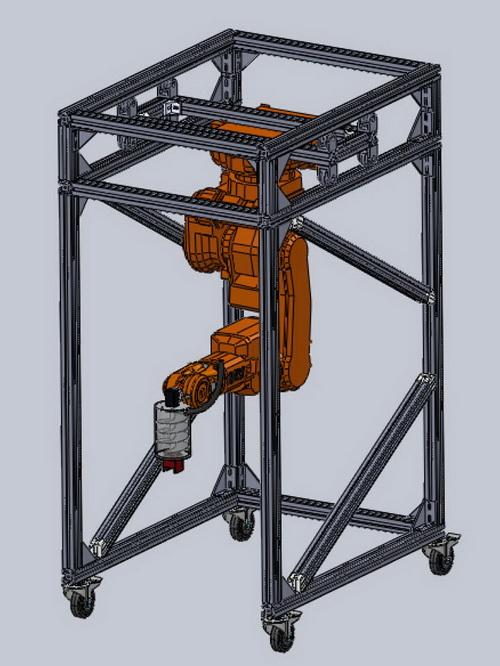Lund University Students Create Mobile 3D Printer to Print Concrete Furniture & Art, with Sights Set on 3D Printed Houses
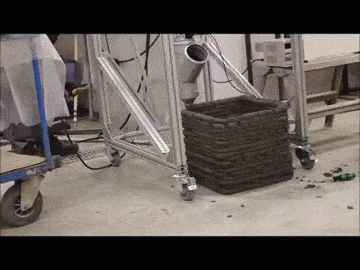 For those of you who frequently follow the 3D printing space, the name Olaf Diegel probably rings a bell. He has been the subject of several stories which we have covered, ranging from his elaborate 3D printed guitars to his more experimental 3D printed saxophone. Whatever the case be, Diegel has certainly made a name for himself both within the music industry and 3D printing industry alike.
For those of you who frequently follow the 3D printing space, the name Olaf Diegel probably rings a bell. He has been the subject of several stories which we have covered, ranging from his elaborate 3D printed guitars to his more experimental 3D printed saxophone. Whatever the case be, Diegel has certainly made a name for himself both within the music industry and 3D printing industry alike.
What very few people know, however, as Diegel tells 3DPrint.com, is that he is also the head of the product development department at Lund University in Sweden. This also happens to be where the first “3D Printed Live Concert” took place back in September of last year.
“We cover all aspects of product development, a reasonable amount of our research is focused around additive manufacturing because of the important role it plays in product development,” Diegel tells 3DPrint.com.
Recently, Diegel and other representatives from Lund University were talking with Helsingborg Hem, which is a department in the city of Helsingborg, responsible for providing housing to its citizens. They had shown interest in working with the university in order to develop a 3D printer that would be capable of 3D printing houses.
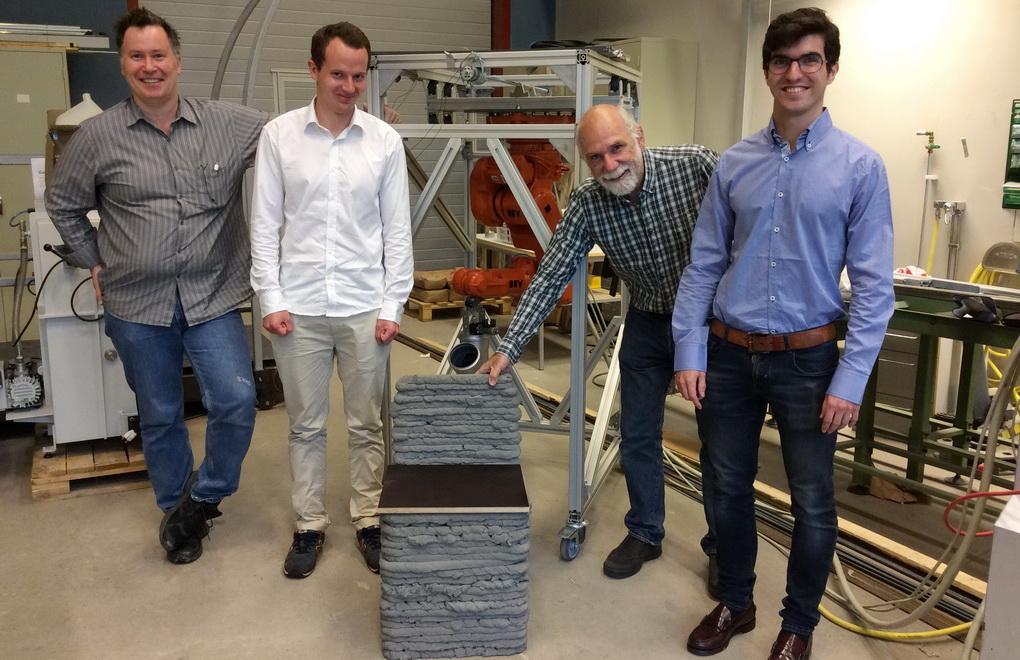
The Concrete 3D printer team: Prof Olaf Diegel, Lars Henrik Anell, A. Prof. Giorgos Nikoleris, and Borja Serra
Working on a strict budget, Professor Diegel, Professor Giorgos Nikoleris, and students Borja Serra and Lars Henrik decided to start off by creating a smaller machine capable of printing concrete objects on a smaller scale.
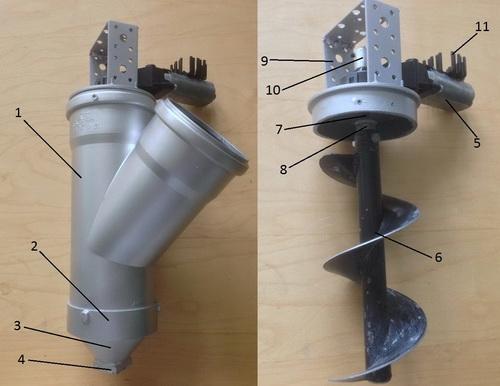
Concrete Print-head Design: 1: PVC plumbing Y pipe, 2: PVC pipe cap, 3: 3D printed nozzle holder, 4: replaceable nozzle, 5: Windscreen wiper motor, 6: 100m post-hole boring auger, 7: PVC pipe cap, 8: motor coupling, 9: Print-head mounting bracket, 10: Motor mounting plate
“We happened to have a spare robot arm floating around, [so] we decided on a smaller proof-of-concept design,” Diegel tells us. “So we decided to make it mobile instead and use it to print stuff like street furniture or public art works. We have been testing the printer with both regular cement, and light-weight EPS cement.”
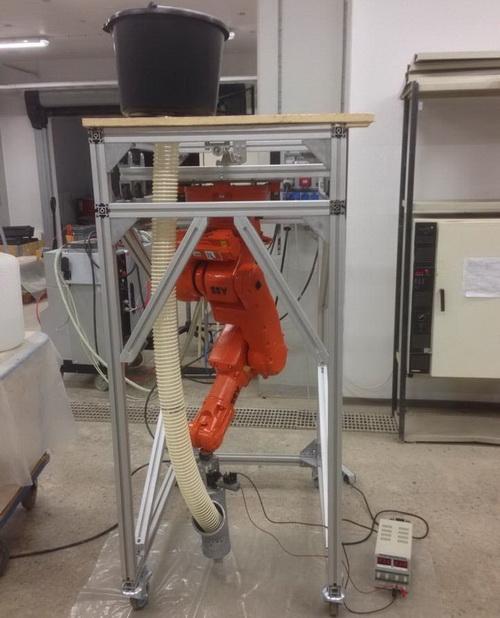 We have seen a lot of concrete-based 3D printers come and go over the past few years, most of which utilize either a pump to extrude the concrete or some sort of auger to drive it out of a nozzle. Diegel and team elected to go the route of the auger because it was more appropriate for their budget constraints, and because he had already created a similar device for extruding plastic pellets for 3D printing.
We have seen a lot of concrete-based 3D printers come and go over the past few years, most of which utilize either a pump to extrude the concrete or some sort of auger to drive it out of a nozzle. Diegel and team elected to go the route of the auger because it was more appropriate for their budget constraints, and because he had already created a similar device for extruding plastic pellets for 3D printing.
The 3D printer, which remains unnamed for the time being, consists of an ABB IRB140 robotic arm which is attached to a print-head based on Diegel’s aforementioned pellet polymer extruder. It utilizes a 100mm hole boring auger to deliver the concrete mixture to the print nozzle. The frame of the printer, which has a maximum print size of 910 x 676 x 1384 mm, is constructed out of aluminum extrusion. It features a removable bottom front linkage that ensures the frame remains extremely sturdy while being transported. When this portion of the frame is removed, it allows for the extended reach of the robotic arm/extruder.
The printer currently is set to print at a layer width of 30-40mm, and a thickness of 10-20mm. The layer thickness is controlled via the machine’s control software, and the thinner the layer height is set, the wider the layers become.
“It’s still very early days, and the project is on-going, and we’ll have a few more students working on it this coming semester, making further improvements to it,” Diegel explains.”
He currently has plans to improve the concrete feeding system, add paddles to smooth the objects being printed, and perhaps replace the robotic arm with a more conventional gantry type system. It will certainly be interesting to continue following this project to see if this system will ultimately be scaled up to print entire houses. What do you think about Lund University’s 3D printer? Discuss in the Lund University Mobile 3D Printer forum thread on 3DPB.com. Check out the video of the printer in action below.
Subscribe to Our Email Newsletter
Stay up-to-date on all the latest news from the 3D printing industry and receive information and offers from third party vendors.
You May Also Like
Gorilla Sports GE’s First 3D Printed Titanium Cast
How do you help a gorilla with a broken arm? Sounds like the start of a bad joke a zookeeper might tell, but it’s an actual dilemma recently faced by...
Nylon 3D Printed Parts Made More Functional with Coatings & Colors
Parts 3D printed from polyamide (PA, Nylon) 12 using powder bed fusion (PBF) are a mainstay in the additive manufacturing (AM) industry. While post-finishing processes have improved the porosity of...
$25M to Back Sintavia’s Largest Expansion of Metal 3D Printing Capacity Since 2019
Sintavia, the digital manufacturing company specializing in mission-critical parts for strategic sectors, announced a $25 million investment to increase its production capacity, the largest expansion to its operations since 2019....
Velo3D Initiates Public Offering in a Bid to Strengthen Financial Foundations and Drive Future Growth
Velo3D (NYSE: VLD) has been among a number of publicly traded 3D printing firms that have attempted to weather the current macroeconomic climate. After posting a challenging financial report for 2023,...


